Christen Smith – The Pioneer and the Greatest of the Heavy Lifters
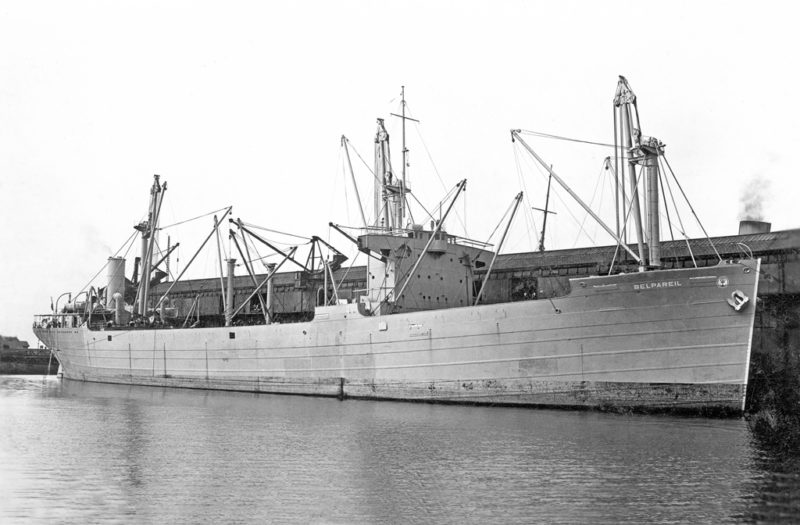
The volatility of freight rates in shipping is sometimes almost beyond belief. This was the case after Capt. Christen Smith (1883-1940) had set up his own company in 1918 as A/S Christen Smiths Rederi and ordered two ordinary engines ‘midships cargo ships of 3,400 dwt to be delivered in 1920/21 by the Moss Vaerft yard in Norway. The boom and slump in freight rates in 1920/21 saw rates plummet by 40% in a few weeks. The first of the pair of ships obtained a one year charter and was then laid up, while the second went straight from the shipyard to the lay up buoys. Capt. Christen Smith then had to think ‘outside the box’, and he and his brothers designed a conversion of his two new ships as pioneer heavy lift ships, with eight heavy lift derricks able to lift locomotives, carriages, barges, tugs, lightships etc using spreader beams in a single lift onto the clear foredeck and aft deck of the two ships. Previously, transporting locomotives to far distant parts of the world involved ‘knocking down’ the items into many smaller components for ease of transport and then reassembling them at their destination.
The two new pioneer heavy lifters were named Belgot and Belfri and registered under single ship companies, with Capt. Basberg in command of Belgot. Capt. Christen Smith may have commanded Belfri, as he had in 1910 been in command of the largest ship in the Norwegian Merchant Navy at the young age of 27 years. His ship was the steamer Henrik Ibsen of 4,671 grt built in 1906 by Sir Raylton Dixon & Company at Middles-brough. She had dimensions of overall length 383.9 feet, moulded beam of 52.8 feet, and moulded depth of 17.7 feet, and was a ‘three islander’ with a long bridge deck of 114 feet, short fo’c’stle and poop of 36 feet and 33 feet, with a triple expansion steam engine by the North Eastern Marine Engineering Co. Ltd. on Tyneside. Capt. Christen Smith also saw service with the Royal Norwegian Navy during World War I.
Belgot and Belfri could carry eight locomotives on the foredeck and eight locomotives on the aft deck, all arranged athwart-ships. The two sisters had dimensions of overall length of 275.7 feet, moulded beam of 43.7 feet, moulded depth of 18.9 feet, with a bridge deck of length 82 feet, and short fo’c’stle and poop of 32 feet and 27 feet. A service speed of ten knots was obtained from a triple expansion steam engine by the builders. Three slightly larger purpose built engines aft heavy lift ships were completed by Armstrong, Whitworth & Co. Ltd. on the Tyne during 1924 to 1926 as Beldis, Belnor and Belray. The latter ship was launched on 15th February 1926 at Low Walker by Mrs. B. Irvin, wife of the manager of the Armstrong, Whitworth locomotive department. She had dimensions of overall length of 328.9 feet, moulded beam of 46.0 feet, moulded depth of 23.3 feet, and of 2,888 grt and 4,280 dwt. She had a bridge deck of length 82.0 feet, fo’c’stle and poop of 26.0 and 23.0 feet. The trio were all powered by Armstrong-Sulzer diesel engines of 1,350 bhp at 110 rpm to give a service speed of ten knots. They had two holds, and their nine heavy lift derricks and eight winches could lift up to 120 tons on one derrick and 50 tons on the other derricks. The derricks could swivel to ease the loading and discharging of awkward heavy lifts, and the blocks and pulleys were made of high tensile steel, with large spreader beams to spread out the huge weights.
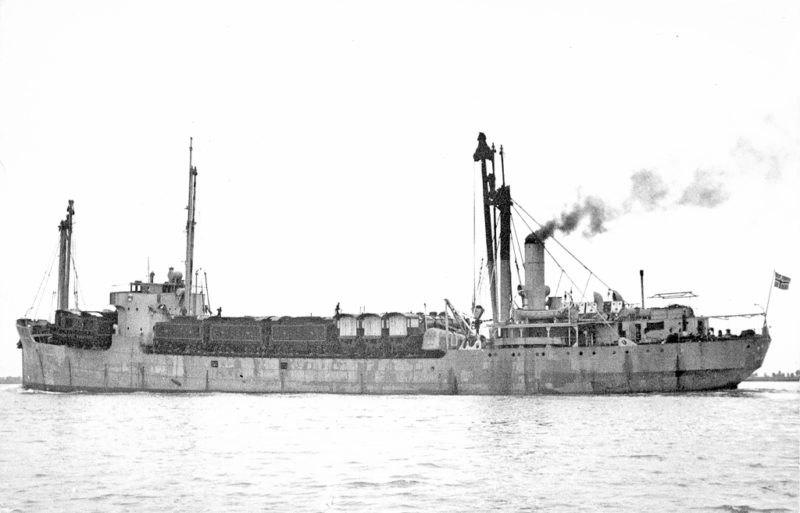
A further quartet of engines aft heavy lifters came from the same yard on Tyneside during 1926/28, as the sisters Belmoira and Belpamela of 3,214 grt, and the much larger twin screw sisters Belpareil and Beljeanne of 7,203 grt, and all powered by four cylinder or eight cylinder Sulzer diesel engines. The latter pair were the finest heavy lift ships that Capt. Christen Smith had yet designed, with special ballasting arrangements, great stability, strong decks, hatch coamings and covers, and long pillar free holds. The pair had dimensions of overall length 414.6 feet, moulded beam of 67.1 feet, moulded depth of 31.0 feet, with a narrow bridge deck ‘midships of 32.0 feet and fo’c’stle and poop of length 40.0 feet and 96.0 feet. The pumping systems for controlling the heavy lifts over one side of their hulls, moved a total of 2,184 tons of water ballast to tanks on the other side of their hulls to give stability when lifting. The absolute minimum number of bulkheads were erected that would comply with Class Society rules. The holds were wide and clear on their long decks, the hatches were especially strengthened to take really heavy loads on top, and strong stump heavy lift derricks of 125 ton capacity with heavy duty winches were fitted.
The Depression brought heavy financial losses to Capt. Christen Smith and his fleet of nine heavy lifters, and the company was financially restructured in 1935 under a new name of Skibs A/S Belships, and known throughout the world as ‘Belships’. A three hold ship with two holds in front of the bridge and one aft was purchased as Port Alfred from the Anticosti Shipping Company of Montreal in 1933 and renamed Beldagny. She had been built in 1930 by the South Bank yard of Smith’s Dock Co. Ltd. to transport bauxite to Port Alfred at the head of the Saguenay river, a tributary of the St. Lawrence. She had dimensions of length 344.3 feet, moulded beam of 60.3 feet, and moulded depth of 27.3 feet, with three boilers providing steam at 200 psi to a triple expansion steam engine, which was boosted by an exhaust turbine shortly after her purchase. She had a dozen heavy lift derricks and a dozen winches and could lift up to 7,100 tons of heavy lift cargo. She was sold in 1938 to Foss Beck Shipping Company (A. C. Lensen, London) and renamed Foss Beck. She was requisitioned by the Admiralty in 1940 and commissioned as HMS Foss Beck for the transport of aircraft and as a boom carrier.
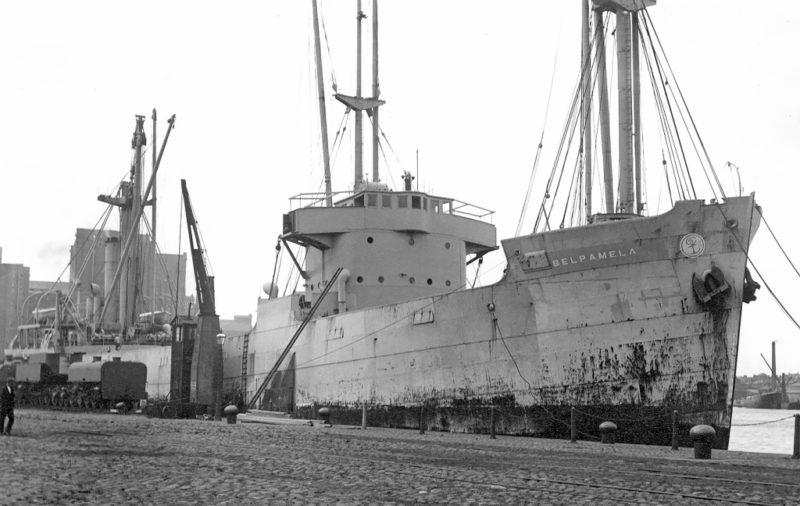
Several examples are now given of their worldwide heavy lift voyages during the inter-war years:-
(A) 200 locomotives were delivered plus their tenders and other equipment to Belgian State Railways during the early 1920s by Belgot and Belfri in many heavy lifts and voyages.
(B) A large number of locomotives were transported to India for the Bombay, Baroda and Central India Railway, involving Capt. Christen Smith making a special visit to India to inspect discharge facilities there for a long series of voyages carrying railway stock.
(C) Belpamela took a heavy load in February 1930 of sixteen locomotives, each weighing 90 tons, and nine tenders, a seaplane tender and a red hulled lightship with tall central tower and lantern weighing in at 220 tons from Liverpool to India. She used her own heavy lift derricks fixed to heavy lift stump masts to lift the cargo into the wide, large holds.
(D) Belmoira, sister of Belpamela took a heavy load to South Africa of sixteen railway locomotives, a large tug, and barges lifted in a series of lifts on to her specially strengthened decks, all transported in one voyage.
(E) Belpareil loaded at Schiedam in 1931 a total of 1,302 tons of locomotives and tenders into her hold, four barges totalling 633 tons, 110 tons of steel piping, and two tugs and a pilot launch onto her deck. The final lift for this voyage was a hopper barge weighing in at 200 tons, which was the heaviest single lift ever up to that point in time.
(F) The Buenos Aires Central Terminal Railway Company Railways received in 1924 seventeen railway locomotives and their tenders on the decks of Christen Smith heavy lifters, and a further two dozen rail carriages and two barges in the second half of 1930 on Belpamela.
(G) A dozen barges built by the Saltney yard of J. Crichton & Co. Ltd. were loaded athwartships onboard Belray at Connah’s Quay in Flintshire for export shortly before the yard closed in 1935.
(H) Belpamela loaded a full cargo of locomotives at Birkenhead in December 1935 for China, and then a 120 ton lightship was loaded at Woolwich for Rangoon in Burma in January 1937. A full cargo of long oil towers each weighing 100 tons was loaded athwartships in the Thames for the Persian Gulf and extended over the side of the hull by 18 feet on each side. The Coronation Scot locomotive and train was transported from Southampton to Baltimore in February 1939, with the locomotive in the hold and the carriages on deck.
(I) Belmoira loaded the lightship Bahrim onto her deck on the Thames for the Far East in the summer of 1935, and on 31st January 1938 she sailed from Wilmington (Delaware) with twenty American built ‘Pacific’ locomotives for Hong Kong and eventually bound for China.
(J) Belmoira sailed from Port Talbot on 15th September 1928 bound for Port Kembla in New South Wales via the Panama Canal with a cargo of 4,074 tons of steelwork and machinery that comprised a ‘knocked down’ rolling mill plant for Australian Iron & Steel Ltd. into 50 ton pieces. She was briefly aground in the Panama Canal and after minor repairs reached her destination, with reconstruction of the rolling mill taking place after Belpamela arrived with the rest of the mill in March 1929.
(K) Belmoira sailed from New York in September 1931 for Russia with locomotives under the command of Capt. Hald when she picked up three Transatlantic aviators on a flight from Lisbon to New York after they ditched in the sea about 80 miles off Cape Race.
(L) Belnor transported a full load of locomotives from Antwerp to Wellington in New Zealand in July 1927, and another cargo of locomotives for Barahona near Santo Domingo in the Dominican Republic in March 1928. She sailed from Liverpool in late December1931 with three lightships, each weighing 140 tons for headlands on the Burmese coast. She sailed from Baltimore with 2,417 tons of mill machinery and components in March 1939 for the Shotton strip mill on the river Dee. She encountered gales in the Atlantic and sent out an SOS after four pieces of machinery weighing 120 tons were lost overboard, which was answered by the Italian liner Conte di Savoia and approached her but no assistance was necessary.
(M) Beldis sailed from the Tyne with a full cargo of locomotives for Apapa Wharf in Lagos in early 1927 after arriving back from Australia in late 1926. She had sailed from the Tyne with another cargo of 14 locomotives for Adelaide in late January 1926, with another 16 locomotives of this order carried by Belray, for delivery to Ocean Steamer Wharf in Adelaide for the South Australian Railways. Beldis completed the unloading of the last locomotive on 17th May 1926, with Belray arriving at Adelaide on 28th June 1926 and needed the help of equipment from Beldis for her discharge of locomotives. Belray then moved in ballast to load sugar at Mauritius for the U.K., and Beldis loaded jarrah wood at Bunbury for South Africa, and then ballasted back to the U.K.
(N) The tug Lady Cadell was loaded onboard Belmoira at Gladstone Dock in Liverpool for Banagar in India in 1935.
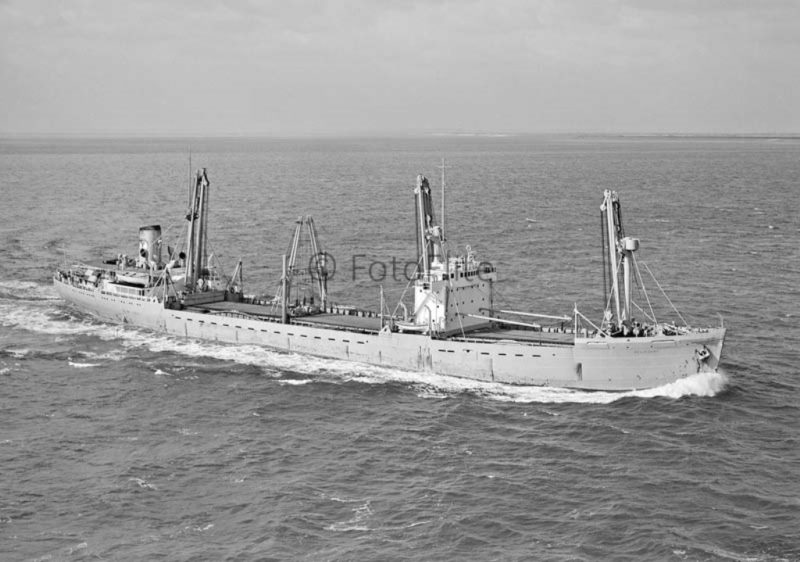
The Christen Smith fleet in the inter-war years had grey hulls with red boot topping, grey lifeboats, uppers, masts and derricks and a completely grey funnel. The Head Office was at Bydo Alle in Oslo, however Capt. Christen Smith lost control of his company in the mid 1930s during the financial crisis and reconstruction of the company, with a controlling share taken by three brothers of the Stove Lorentzen shipping family named Axel, Frithjof and Jorgen Lorentzen. Belgot had been sold in 1929, Belfri in 1934 and Beldis in 1936, with Beljeanne sold in 1937 to Skibs A/S Ringwood (Olav Ringdal of Oslo, manager) and renamed Ringwood, but she was captured on 14th October 1940 and scuttled by the German raider Orion when 800 miles north east of Nauru while on a voyage from Shanghai to Nauru in ballast.
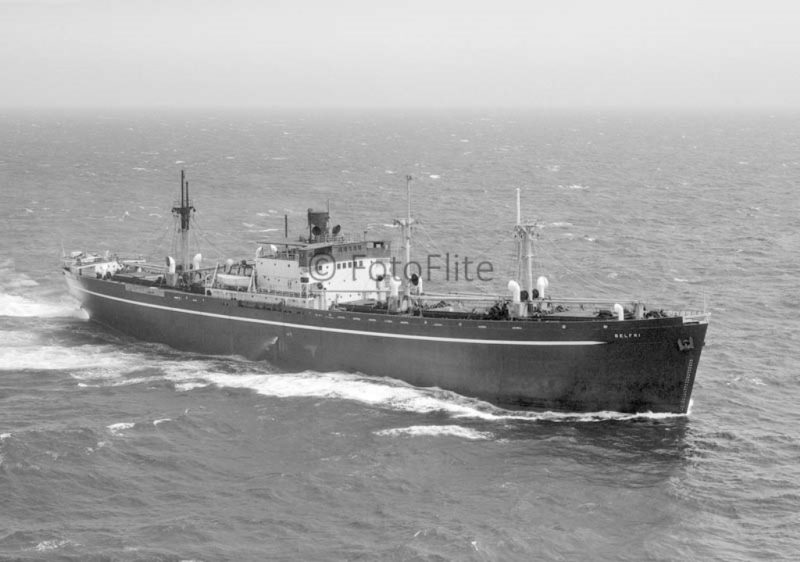
WORLD WAR II
A fleet of five heavy lifters was owned by Belships on the outbreak of war on 3rd September 1939, however Belpamela was missed by three torpedoes that detonated prematurely from U32 on 2nd March 1940 en-route into Kirkwall for inspection of cargo. Another cargo ship, Lagaholm, on a voyage from Baltimore to Malmo with a mixed cargo was also ordered into Kirkwall but was sunk by gunfire from U32, with Belpamela rescuing her crew. Belpamela came under German control for the rest of the war on 12th July 1940. Belmoira was torpedoed and sunk by U26 in the Western Approaches in position 48°5′ North, 10°30’W on 30th June 1940. She was on a voyage from Rufisque in Senegal in ballast, having come under French Vichy control at Dakar, her crew being fortunately saved.
The remaining three ship Belships fleet was managed from London and New York by an organisation known as Nortraship (The Norwegian Shipping and Trade Mission), whose negotiations with the Ministry of Shipping were conducted by Mr. Lorentzen of Belships, aided by Mr. John O. Egeland, Mr. Thomas Fearnley, Mr. I. H. Olsen and Mr. Klaus Wise-Hansen. Thus, most Norwegian ships that were on the high seas at the declaration of war then sailed for the Allied war effort during the long war, with 150 tankers and 400,000 dwt of dry cargo ships helping the Allied war effort from 24th June 1940. Capt. Christen Smith had also escaped Norway during the German invasion of early April 1940, but he unfortunately died of cancer in London later in 1940 at the age of 57 years. However, most of the Belships Head Office in Oslo had little or no contact with the heavy lifter fleet during the war.
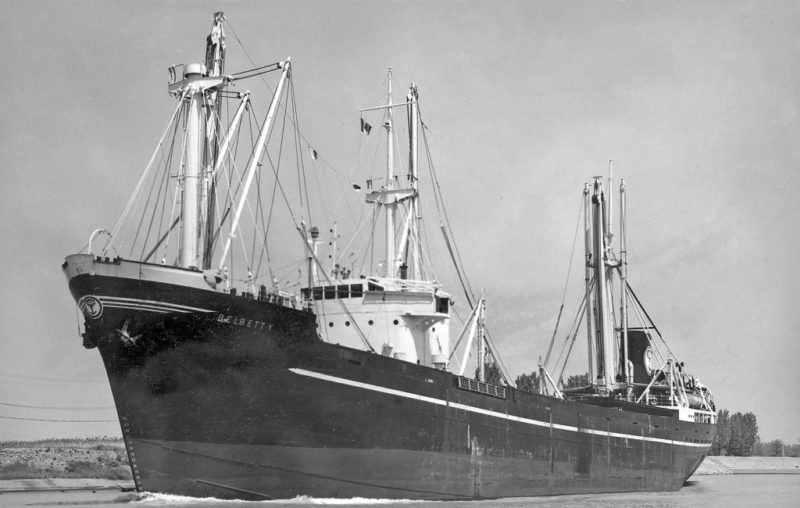
The requirement for the transport of heavy war material as well as heavy landing craft and marine equipment, prompted the British Government to order ten heavy lifters of 10,300 dwt to the design of Belpareil. They had three holds with steel buttresses to port and starboard of the bulkheads between the holds, and four cross bunker tanks for oil fuel or water ballast directly below the ‘midships superstructure and navigating bridge. This structure had the ship’s hospital and accommodation for officers on the lower of four decks, with more officer’s accommodation on the second level, the Master’s accommodation and radio room and cabin for the radio officer on the third level just below the chartroom and wheelhouse on the navigating bridge. The heavy lift derricks were three in number and each of 120 tons capacity, with ten more derricks of five or ten tons capacity and varying in length from 51 feet to 71 feet.
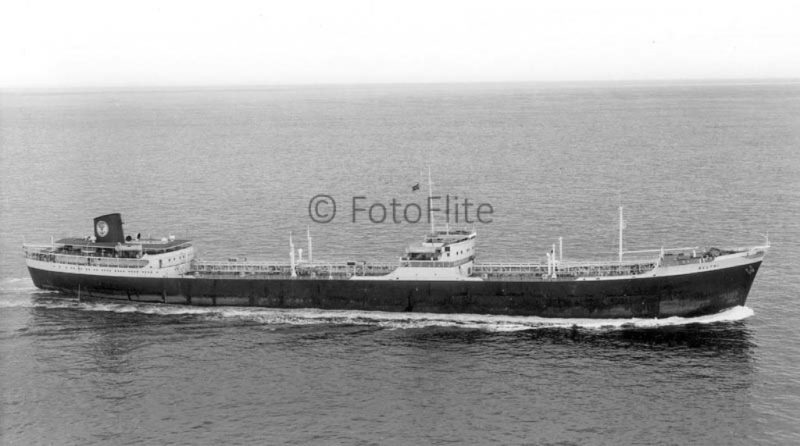
This war built fleet of heavy lifters was completed between 1942 and 1947 by yards on the Tyne (Walker Naval Yard), at Barrow, and on the Clyde (Greenock Dockyard Co. Ltd. They were given the names of Empire Elaine, Empire Charmian, Empire Viceroy, Empire Admiral, Empire Athelstan, Empire Ethelbert, Empire Byng, Empire Marshal, Empire Wallace and Empire Canute. They were managed by the Ministry of War Transport with some technical assistance from a few members of the Christen Smith fleet who had escaped from Norway in April 1940 to Britain. The maiden voyage of Empire Marshal in November 1945 involved a large number of nineteen small craft at Birken head and the Gladstone Dock in Liverpool, where a wide oil separator was loaded and overhanging her sides so that she could safely navigate the locks at Liverpool. The maiden voyage of Empire in May 1945 for Bombay involved carrying five large landing craft and five tugs to be loaded onto her decks.
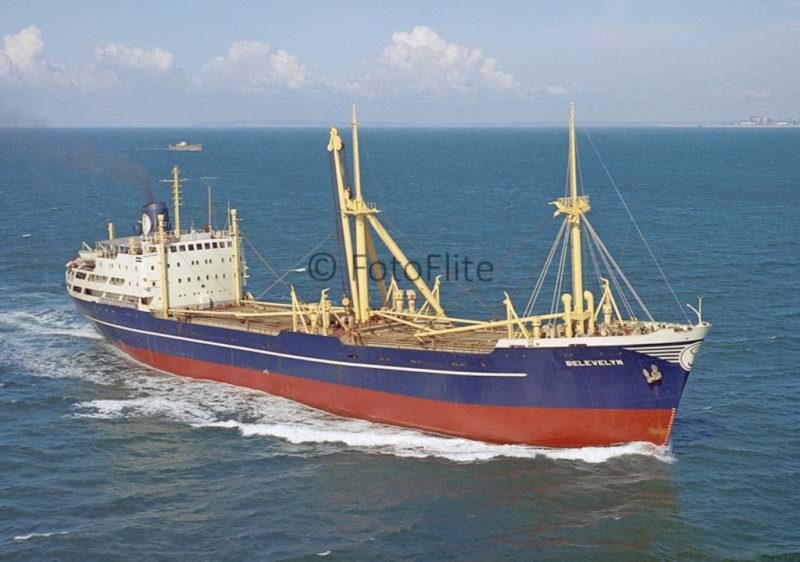
POST-WAR HEAVY LIFTING
Belships purchased two of these ten war built heavy lifters in 1947, with Empire Canute becoming Belocean and Empire Ethelbert becoming Beljeanne. The latter ship received new oil engines in October 1954, and Belocean and Beljeanne went on to give seventeen years of service to Belships before they were sold for further service in 1964. This pair and the four war survivors of Belpareil, Belnor, Belpamela and Belray, which had made valuable contributions to the war effort, were in demand in post-war years as the world needed to be rebuilt and the devastation of war swept away. Locomotives and railway rolling stock, heavy machinery for industry, and rotors and stators for the turbines of new power stations needed transportation around the world. However, Belpamela sank during a fierce storm on 11th April 1947 when 700 miles south east of Nova Scotia while on a voyage from New York to Cherbourg with a cargo of seventeen railway locomotives, which broke free and rolled out of side of her hull. Nine crew members lost their lives unfortunately, and the replacement locomotives for SNCF Railways of France took five months to reach Cherbourg. Beljeanne and Belocean were employed by the United Nations for the three years of the Korean War from 1950 to 1953.
Belnor helped to repatriate War Department locomotives from Palestine to England during 1946, and then was used for an order placed in 1951 by the South Australian Railways Board for locomotives for the hauling of concentrates from Broken Hill to Port Pirie. Belnor arrived at Port Pirie on 1st June 1953 from Dunkirk, and then spent all of the six months of the second half of 1953 completing this order for the transport of locomotives, ten railway distillate tankers, and many heavy alternators and a turbine stator for the Northern Regional Power Station at Port Augusta, further up the Spencer Gulf in South Australia from Port Pirie. Belnor then arrived in Sydney (NSW) on 23rd June 1953 to load four more locomotives and their tenders constructed in Sydney for Port Augusta. The Adelaide Steamship Co. Ltd. were the agents for this cargo, which weighed in at 333 tons excluding the weight of the tenders. Belnor then loaded 3,400 tons of concentrates at Port Pirie and sailed on 17th July 1953 for the U.K., and then loaded up another heavy cargo of locomotives, two transformers, and a quantity of cased machinery at Dunkirk and arrived at Port Pirie again in the middle of December 1953 for final discharge.
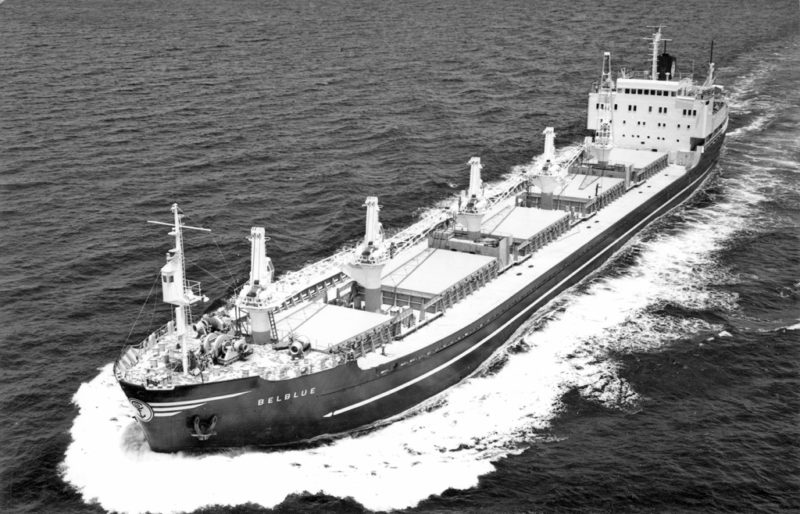
Belpareil was sold in 1960 to Bulkships Ltd. of Panama and renamed New Zealand Venture in 1965. She was sold in 1970 to Losinjska Plovidba of Rijeka and renamed Buga, and was broken up at Split in December 1984 by Brodospas after a career of almost sixty years. Belnor was sold to Danish owners in 1956 and renamed Lise, but later sank as the Greek owned Ioanna on 22nd September 1966 five miles off Arzew after an engine room explosion. Belray was sold in 1959 to Bulls Tank Rederi A/S of Sandefjord, and then renamed Artigas by the Pateras Brothers of Piraeus, and arrived at Hamburg on 25th March 1970 to be broken up by Eisen u Metall.
New post-war heavy lifters were completed as Christen Smith of 8,350 dwt equipped with one 200 ton capacity heavy lift derricks and two of 100 tons capacity by the Fredriksstad yard in Norway in 1947, and Belbetty of 5,100 dwt in 1949 by Burmeister & Wain at Copenhagen equipped with 125 ton heavy lift cranes. Three more heavy lifters for Belships came during 1954/57 from Lobith in Holland at the De Hoop yard as Belkarin, Bellis and Belevelyn of 7,000 dwt with two holds and a central stump heavy lift derrick of 140 tons capacity and other derricks on masts fore and aft of the holds. On her maiden voyage, Belkarin transported a heavy load of two dozen locomotives from Liverpool to Bandar Shapour in Iran, and also loaded a full cargo of paper pulp at Kramfors in Northern Sweden in 1966 for Antwerp, passing under the high concrete Sando arch bridge opened in 1943 to reach the Gulf of Bothnia.
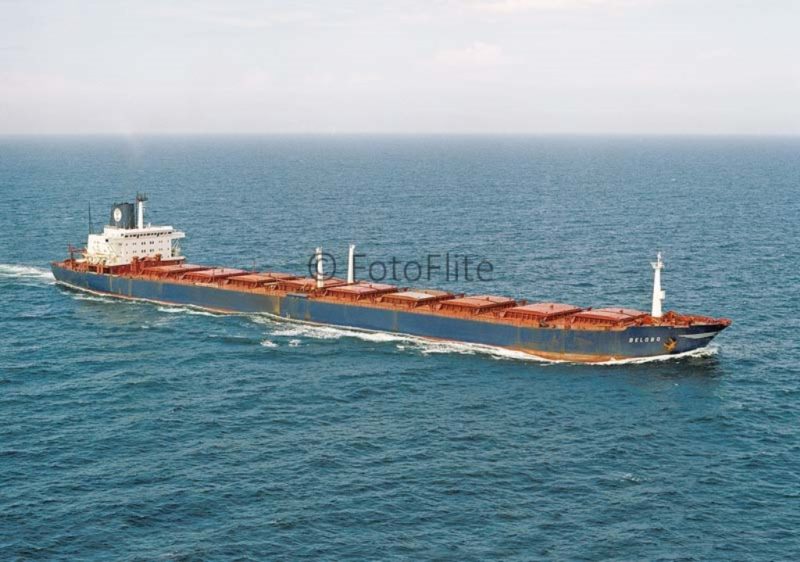
A ‘Liberty’ type was traded as Belfri, and two tankers of 19,000 dwt and 15,350 dwt were completed in 1955 and 1958 as Belfast by the Glasgow yard of Harland & Wolff Ltd. and Belstar by the Fredriksstad yard. Belkarin and Belevelyn, the last Christen Smith heavy lifters, were sold out of the fleet on the same day of 13th March 1972 to Cypriot owners and renamed Elbella and Elkina respectively, with Belkarin sinking in Suez Bay on 19th March 1978 while on a voyage from Jordan to Holland under the name of Nahost Jumbo. Belevelyn was beached at Gadani Beach on 8th February 1982 for breaking up under the name of Asar. Conventional cargo-liners took over their roles as they were fitted with Stulken jumbo heavy lift derricks of up to 200 tons capacity, and thus Belships had to diversify into bulk carriers and other types of ship. The heavy lift era of Christen Smith had lasted for 52 years from 1920 to 1972.
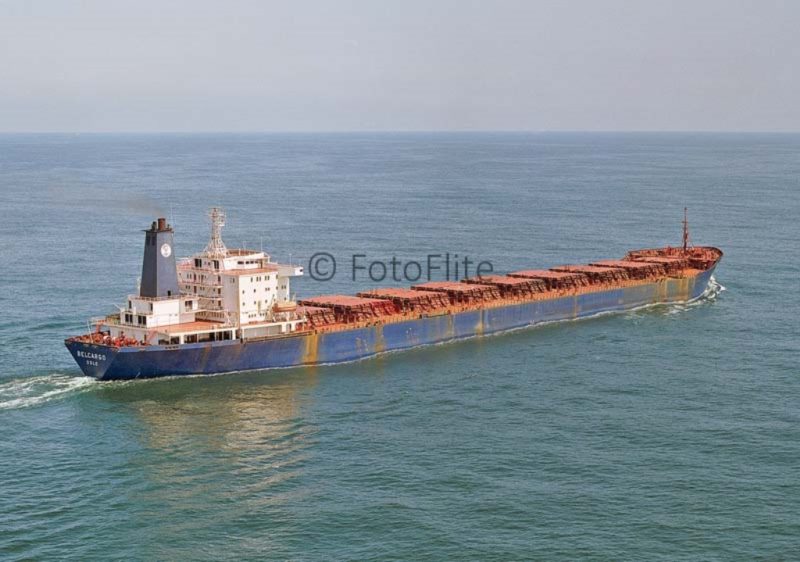
INVESTMENT IN REEFERS AND BULK CARRIERS
The reefer Belnippon of 6,300 grt was completed in 1964 with a high service speed of twenty knots and 270,000 cubic feet of refrigerated space in her four holds was completed by the Oresund and Gotaverken yard in Sweden in 1964, and she had a sister, Pacific Express. General cargo ships with engines aft had also been built for the Belships fleet in post-war years, the first was the engines aft bridge ‘midships Belevelyn of 7,850 dwt launched on 8th June 1948 at South Shields by John Readhead & Sons Ltd. and completed three months later. She had a service speed of 12.5 knots from a four cylinder steam engine and was sold after only six years trading by Belships. She was of a new design known as a ‘strengthened raised quarter decker’, which featured a five hold engines aft design ideally suited for the grain and sugar trades. Rookwood, Rushwood and Granwood followed for William France, Fenwick, Hudson Deep and Hudson Point for the Hudson Steamship Co. Ltd., and Camellia, Cydonia, Gloxinia and Photinia for Stag Line Ltd. of North Shields.
Bellevelyn was followed by the shelter decker Bellully of 13,400 dwt in 1957, single deckers Belvera of 14,800 dwt and Belnor of 15,000 dwt in 1959, and later by the bulkers Belisland of 15,300 dwt in 1963 from Harland & Wolff, Belmaj of 50,210 dwt from the Oresundsvarvet yard in 1964, Belcargo and Belocean of 17,700 dwt from the Frederiksstad yard during 1966/69, Belblue of 18,420 dwt in 1968 by the Bremer Vulkan yard at Vegesack, and the bulkers Belnor and Belstar of 38,400 dwt in 1971/72 from the Fredriksstad yard.
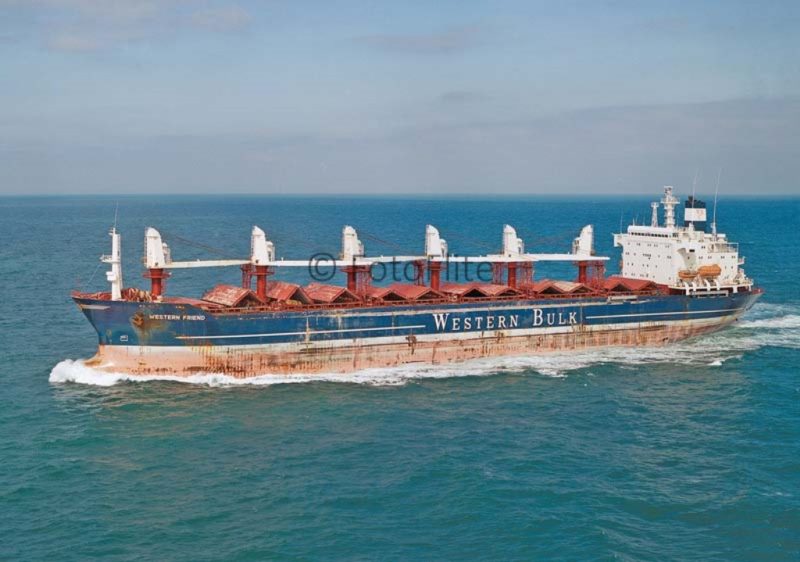
The nine hold bulker Belcargo of 108,700 dwt and overall length of 871.5 feet was completed in 1975 by the Fredriksstad yard and often loaded iron ore at Sepetiba Terminal in Brazil, Puerto Bolivar in Colombia, or Monrovia for Rotterdam, or alternately loaded coal at Richards Bay for Hong Kong. The nine hold ore/oil carrier Belobo of 78,078 dwt in 1974 was delivered from the Bremer Vulkan yard and had two sisters in Ringobo and Obo Duke, and also loaded iron ore at Monrovia for Rotterdam. There were other Handysize bulkers in the 35,000 dwt to 40,000 dwt joined the Belships fleet to operate worldwide. The OPEC price rise of one third in bunker oil fuel adversely affected the company greatly, with newbuildings cancelled, brand new ships laid up until sold at a loss or broken up. The giant ULCC tanker Belfri of 311,440 dwt was completed in 1975 by Bremer Vulkan, and was chartered for five years and then laid up and sold for breaking up in 1983 after a very short career.
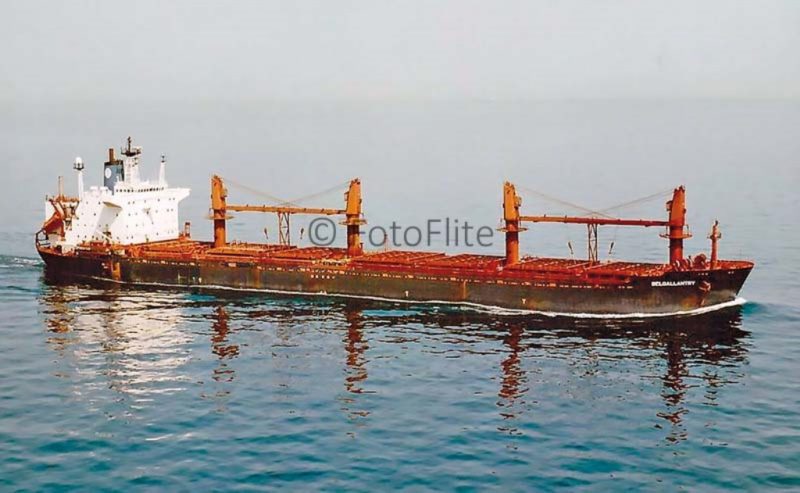
The Open Hatch Gantry Crane (OHGC) forestry and log carriers Belforest, Beltimber and Belwood of 39,850 dwt joined the fleet in 1985 from the Tsuneishi yard in Japan, and containers could also be carried on deck by this trio. Belforest loaded a full cargo of wood products topped off with containers at Coos Bay in Oregon in May 1990, and sailed for Ghent with arrival in June, and then loaded steel at Newport, Brake and Antwerp and sailed in the first week of July for several ports of discharge in California, and then ballasted back to British Columbia for another cargo of forestry products. This trio also loaded forestry products in the Columbia River, at Harmac near Nanaimo on Vancouver Island, New Westminster City and Vancouver, or traded Transpacific from these ports to Tokyo.

The Western Bulk Carriers pool of up to eighty Handysize and Handymax bulk carriers was established by Belships and four other shipowners in 1982 to handle contracts of affreightment, with Western Bulk Shipping (WBS) set up in 1991 with Belships having 46%, Belstove 33% and Kvaerner 31% of the shares through a transfer of their holdings in Western Bulk Carriers. However, a conflict with the other shareholders in the pool ended with Belships exiting WBS at the end of 1999. WBS was listed on the Oslo Bors in 1993 after a public offering brought in 300 million in Norwegian kroner. Western Bell of 37,800 dwt, Belstar of 43,400 dwt and Belnor of 47,400 dwt were new bulkers that joined the owned and operated Belships fleet between 1992 and 1996, with second hand Belisland of 42,083 dwt purchased in 1990.
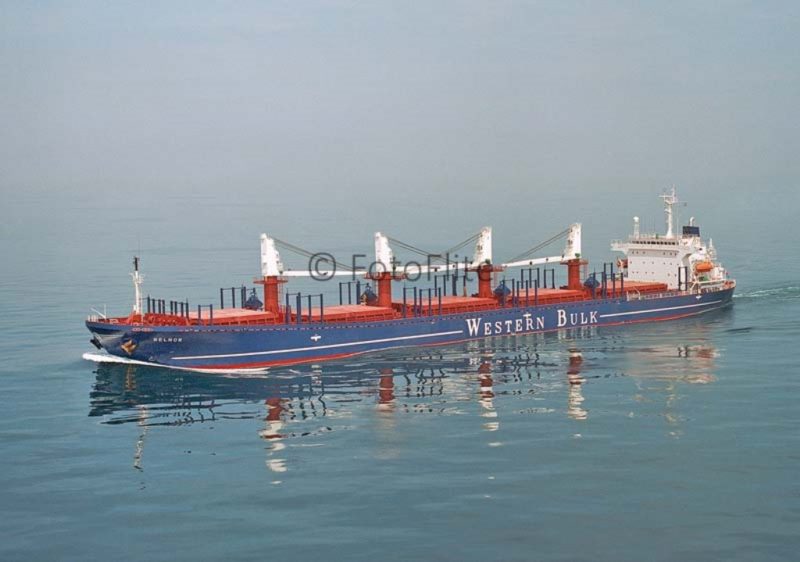
In 1995, the operating income of Belships was 4.23 million Norwegian kroner, up 47% from the previous year and up 64% from 1993 due to very favourable freight rates in 1995. Three Handymax bulkers were owned by Belships operating in the Western Bulk Shipping (WBS) pool, with Belship Tankers operating four owned and five chartered Handysize product tankers, while Belships Trading operated chartered Panamax bulker tonnage carrying coal, ores and grain worldwide. A diversification with a 10.4% stake in Pelican Oil, which produced oil and gas on the Ula and Gyda fields in the North Sea, was made at this time.
Several bulkers and ore/oil carriers were then purchased from WBS and given traditional Belships names e.g. Belgallantry (ex Western Gallantry), Belgreeting (ex Western Greeting), Belguardian (ex Western Guardian) of 43,500 dwt. The larger bulker Belmaj of 149,500 dwt was purchased in 1997, but had been built in China in 1990, and carried iron ore on long term charter from Ponta do Ubu, to the south of Vitoria (Brazil), to Beilun in China. Four product tankers of 40,000 dwt were traded as Belgrace, Beltrader, Belanina and Belanja, while the crude oil tanker Magnolia of 84,656 dwt traded from the Persian Gulf oilfields. The acquisition of the small LPG gas tanker arm of George Gibson Ltd. of Leith in 1996 was unsuccessful as no profits were made, and was sold off in 2003.
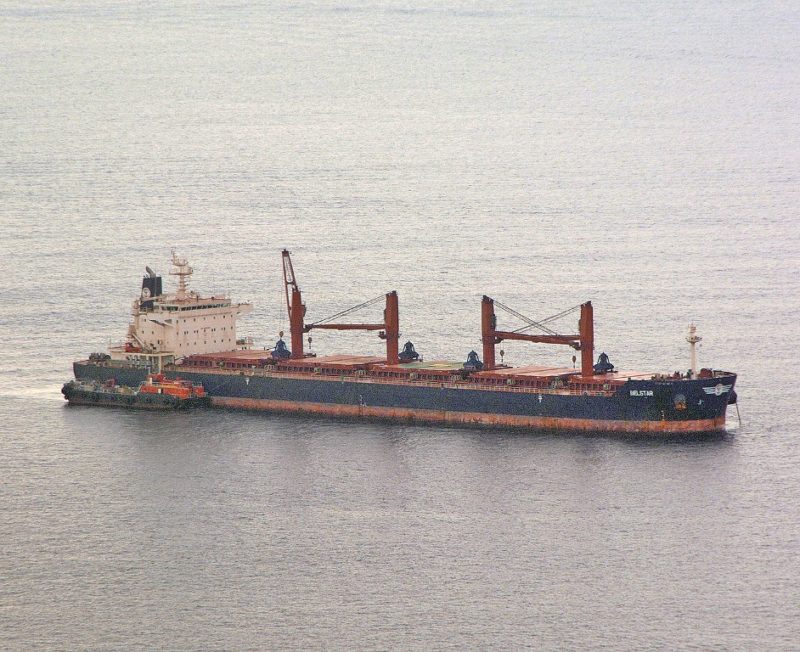
In August 1999, towards the end of the 23.5% stake and involvement of Belships with the Western Bulk Shipping ASA pool, the owned and operated ships were on the following voyages:-
Belgallantry (obo) Keelung to Bahrain
Belgreeting (obo) Mesaieed to Singapore
Belguardian (obo) Fujairah to Khor Fakkan
Belgrace (tanker) Singapore to Fujairah
Belmaj Ponta do Ubu to Beilun (China)
Belnor Singapore to Suez
Belstar Paradip (India) to Visakhapatnam
Western Friend Hamburg to Singapore
Western Iris Baltimore to Tyne
Western Island Rosario to New York
Western Obelisk Vancouver to Melbourne
Western Olivin Haldia to Ko Sichang
Western Ondina Porto Vesme to Casablanca
Western Onyx Tampa to Newcastle (NSW)
Western Opal Mina Saqr (UAE) to Durban
Western Orion Cadiz to Gdansk
Western Rams New Orleans to Vanncouver
Western Team Odessa to Bangkok
Western Tide Hay Point to Visakhapatnam
Western Tiger Brisbane to Columbia River
Western Transporter Almeria to Panama City (Alabama)
Western Trust Vancouver to Newcastle (NSW)
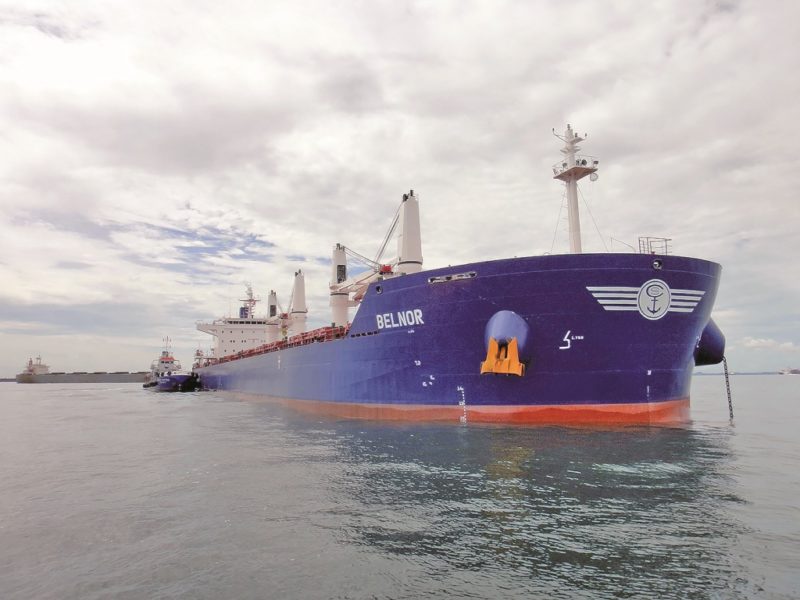
SUPRAMAX and ULTRAMAX BULK CARRIERS
Dry bulk freight rates reached all time highs during the two years of 2003 and 2004 and record profits were made by the company, with Belships acquiring 50% of the Elkem Chartering pool of bulkers. Funnel colours were now blue with a blue ‘S’ inside a ‘C’ above a blue anchor with a narrow blue ring on a white disc. Hull colours were blue, grey or red with red boot topping. These funnel colours were worn by the new bulkers Belisland of 76,662 dwt completed in 2003, and by Belaia of 48,675 dwt completed in 2007 and other new Belships bulkers. Operating income hit $51 million in 2006 in boom freight rates.
However, the world financial turmoil triggered by bank system crashes during 2008/09 struck the company, which badly affected the bottom line profits, with the acquisition of six bulkers stopped at a considerable loss in finance for the cancellations. In 2012, Belships had a fleet of 19 ships in 2012, with sisters Belnor, Belstar and Belocean of 58,000 dwt all on charter to Canpotex of Canada for ten years, the largest exporter of potash in the world, particularly to the under developed countries in Africa as well as to China, Brazil and India. The charter rates for this trio of bulkers built during 2009/11 by Yangzhou Dayang in China averaged $16,000 per day. Belaia was chartered to J. Lauritzen A/S until March 2014 at a net rate of £12,840 per day, and technical management of the Belships fleet was handled by Belships (Management) Pte of Singapore.
A contract was signed in 2013 with the Imabari Shipbuilding yard in Japan for two Ultramax bulkers pf 61,000 dwt for delivery in the second half of 2015. They were delivered as Belforest on charter to Cargill for one year at $8,000 per day, and as Belisland on charter to Canpotex. Belocean also continued her charter to Canpotex. A third purchase option was taken up in 2014 with the Imabari Shipbuilding yard for delivery in the first quarter of 2017. The Belships fleet in 2014 comprised twenty bulkers with the company having exited the product tanker sector to concentrate entirely on Supramax and Untramax bulkers. Belocean was dry-docked for special survey in China during September 2015, and was off hire for three weeks.
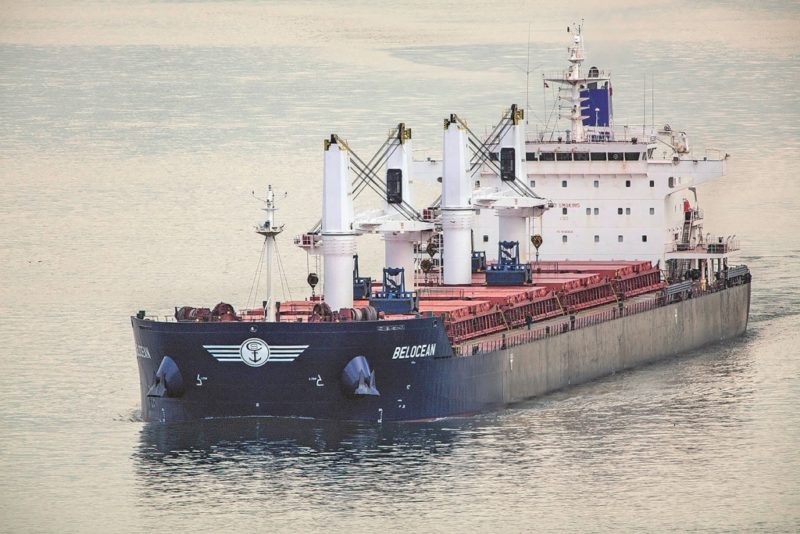
A Belships fleet of twenty bulkers was being traded in 2016, with both Belocean and Belforest re-hired without significant loss of earnings after coming off hire. One Ultramax bulker of 63,000 dwt was ordered from the Imabari Shipbuilding yard in Japan for delivery in January 2018, and another from the same yard was scheduled for delivery in the first half of 2020. The Handysize bulker Super Challenge of 28,581 dwt was on time charter during 2016 to Belships Tianjin Shipmanagement. Seven year bareboat charters were agreed in 2017 for two Ultramax bulkers of 61,000 dwt to be delivered by a Japanese yard during the fourth quarter of 2019 and first quarter of 2020.
During the Belships centenary year of 2018, Belnippon was delivered in January 2018 on time charter to Cargill for one year, and both Belocean and Belforest were off hire at the end of 2018, but soon found new employment. After divesting of its 50% stake in Elchem Chartering pool with thirteen Handymax bulkers on time charter, Belships gained a 50% stake in Lighthouse Navigation (LHN) of Bangkok in December 2018 to increase the size of its fleet of Supramax and Ultramax bulkers to two dozen ships. LHN has offered customised services for dry bulk charterers since 2009 on Handysize and Supramax bulkers transporting steel, rice, agricultural products, fertilisers as well as breakbulk cargoes. The LHN merger also saw the end of an 80 year association in the management of the Belships fleet by the Lorentzen family since 1937, with generations of brothers, their children and grandchildren, having been key owners, managers and executives of Belships.
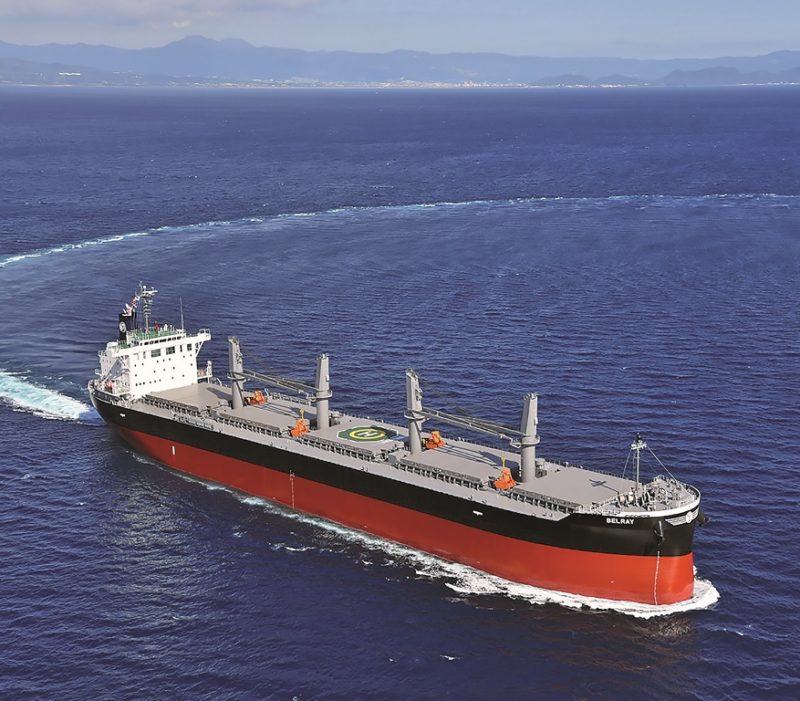
In 2019, an Ultramax bulker of 64,000 dwt was ordered from a Japanese yard for delivery during the second half of 2021. Belcargo (ex Viola) was purchased in May 2019 from Wenaas Shipping A/S for $13.0 million, Belfri (ex Sephora) was purchased from Prospero Maritime Ltd. for $12.0 million, and Sofie Victory was purchased in July 2019 for $24.15 million, and retained her name. Average ‘spot’ earnings in 2019 were running at $9,587 per day, while average charter rates were $11,360 per day. Belsouth was fixed to Western Bulk Chartering for nine months at $11,950 per day, while Belstar, Belnor and Belisland continued on charter to Canpotex, and Belforest, Belocean and Belnippon continued on charter to Cargill.
During 2020, a fleet of 23 Supramax and Ultramax bulkers was being traded, with seven Supramaxes named Belocean, Belnor, Belstar, Balcargo, Belorient, Belfort and Belfri, and sixteen Ultramaxes named Belmar, Belfast, Belfuji, Belaja, Belmoira, Belray, Belnippon, Belhaven, Belisland, Belforest, Belinda, Belmont, Belatlantic, Belpareil, Belsouth and Sofie Victory. Belray arrived in ballast in the Tyne on 4th August 2020, and loaded a scrap metal cargo and sailed for Wilmington (NC) on 9th August, arriving on 22nd August 2020. All of the Belships fleet are geared bulkers with four grey painted cranes suitable for lifting and discharging steel pipes, wind turbine components and project cargo in ports without cranes and infrastructure.
Belships Shipmanagement began in 1983 as NorthSouth Shipmanagement (Pty) Ltd. in Singapore for management, consultancy, project management, newbuild supervision, sale and purchase transactions, ballast water treatment advice and scrubber fitting advice. This became Belships Singapore Shipmanagement office in 1993, the Shanghai office was opened in 2001, and the Philippines office was opened in 2006. Belships crews are recruited from manning offices in Tianjin (China), Myanmar (Burma) and the Philippines. Belships Head Office and financial management remains in Oslo, with commercial operations also run from Bangkok, and technical management of this big fleet is done from Singapore and Shanghai.
Lars Christian Skarsgard has been CEO of Belships since 13th March 2019, and joined the company after a wealth of experience with Fearnleys A/S of Oslo in a career spanning deck cadet, shipbroker, ship manager and shipowner. Belships also has a Chairman and six directors including Sverre J. Tidemand, who took full control in 2010 of Sonata Holdings, the majority shareholder of Belships.
Belpareil was dry-docked in February 2020, with refits and special surveys only done once in five years due to the special anti-corrosion properties of the underwater hull paints supplied by International Paints Ltd. of Gateshead. The amount of cargo carried in the first quarter of 2020 had increased over the same period of 2019, and has continued to increase year on year for the last five years. However, the second quarter results were weak as both ‘spot’ and charter rates were down due to the COVID-19 virus pandemic. The average age of this big fleet is five years with several Supramax and Ultramax bulkers bareboat chartered for seven years. Belships shares with the ticker symbol of ‘BEL’ were trading in June 2021 on the Oslo Bors at 12.6 Norwegian kroner per share.
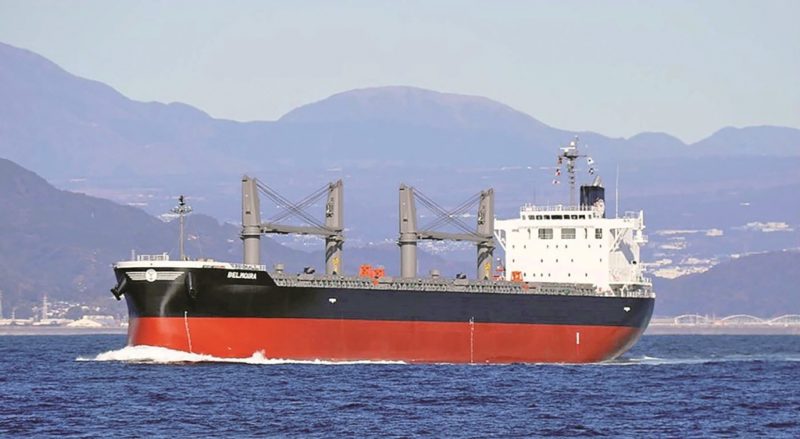
POSTSCRIPT
Capt. Christen Smith set up his new shipping company in 1918, but his first two ships delivered in 1920/21 had to be radically altered from their original purpose to become the first pioneer heavy lift ships in the world. During the inter-war years, Belships was the leading heavy lift company in the world with heavy lifts of locomotives, tenders, carriages, barges, tugs, lightships and oil refinery components transported to countries in Africa, Asia and South America. During the late 1940s and the decade of the 1950s, Belships ordered several new heavy lift ships with demand boosted by the Korean War. This remarkable shipping company was often in the media of the day in newspapers and on the cinema for its heavy lifting, and has survived to trade into a second century of operations.
However, the sector suffered very heavy competition from cargo-liners with heavy lift Stulken derricks of up to 250 ton capacity, and the last Belships heavy lifter was sold in 1972. The company then diversified into crude and product tankers, ore/oil carriers, reefers, and bulkers from the late 1950s, in a process that has continued unabated ever since and has proven most successful financially with operating revenue at an all time high. The Supramax and Ultramax fleet of Belships bulkers trade worldwide, particularly to North America, Europe, West Africa, Australia, and to the Far East ports in South East Asia, Singapore, Philippines and China.
I wish the company well in the future and also sincerely thank the excellent website of Belships at www.belships.com.



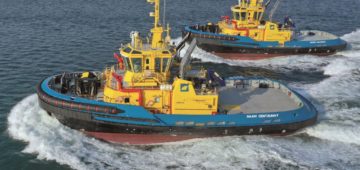


Comments
Sorry, comments are closed for this item